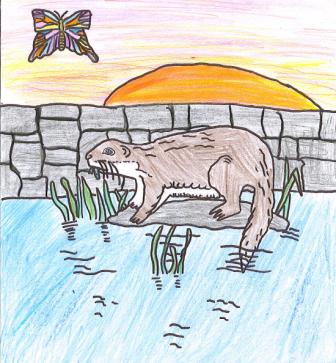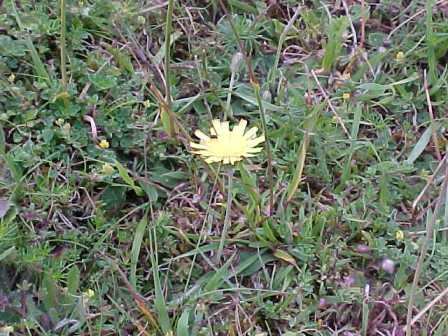Tubber is a scenic village located at the northern edge of the Burren.
The Burren is an area covering 750 square kilometers in the North-West corner of County Clare. In Irish its name is Boireann a barren stony place.
One of Oliver Cromwells Generals, Lieutenant - General Edmund Ludlow was sent to subdue County Clare. He wrote "After two days march….we entered into the Barony of Burren of which it is said that it is a county where there is not water enough to drown a man, wood enough to hang one, nor earth enough to bury him: which last is so scarce, that the inhabitants steal it from one another, and yet their cattle are very fat; for the grass growing in turfs of earth, of two or three foot square that lie between the rocks, which are of limestone, is very sweet and nourishing.
|

Limestone Pavement
|
The Burren is a great expanse of exposed limestone rock known as karst. The limestone pavement forms gently-sloping steps or terraces. These are criss-crossed by deep grooves called grikes and flat slabs called clints. Ferns and many other rare plants grow in the grikes.
Limestone is a permeable rock. This means that rainwater can seep through it quiet easily. Water falling on the surface dissolves the limestone and carves out the grooves in the pavement. In a limestone landscape, water flows on the surface for a short time. It then disappears down large vertical grikes called swallow holes. It trickles down below the surface and hollows out underground caves and passages.
|
Turloughs
'Turlough' comes from the Irish word tuar loch a dry lake. Turloughs are unique to Ireland and there are many in the Burren.
Turloughs began to form thousands of years ago, after the Ice Age. At first, they were lakes in hollowed basins in the limestone.
Limestone is permeable and easily dissolved by rainwater. Over the years, the limestone basins became honeycombed by the weathering and erosion caused by rainwater. This has mad the lakes 'leaky'.
In Winter, when rainfall is heavy, the water table rises. Water bubbles up through underground springs and spreads across the land to form the turlough. When the water table drops in the drier Summer weather, the water disappears down swallow holes in the limestone.
In earlier times, the water in the turlough left a white dusting of lime on the land as the water retreated in the summer. The lime came from the dissolved rocks and acted as a free fertiliser which provided excellent summer grazing.
Recently, many turloughs have been drained to extend the grazing season. Artificial fertilizers have replaced the natural lime. However, because the soils are often quite thin, they cannot stand long grazing without being badly damaged.
|




